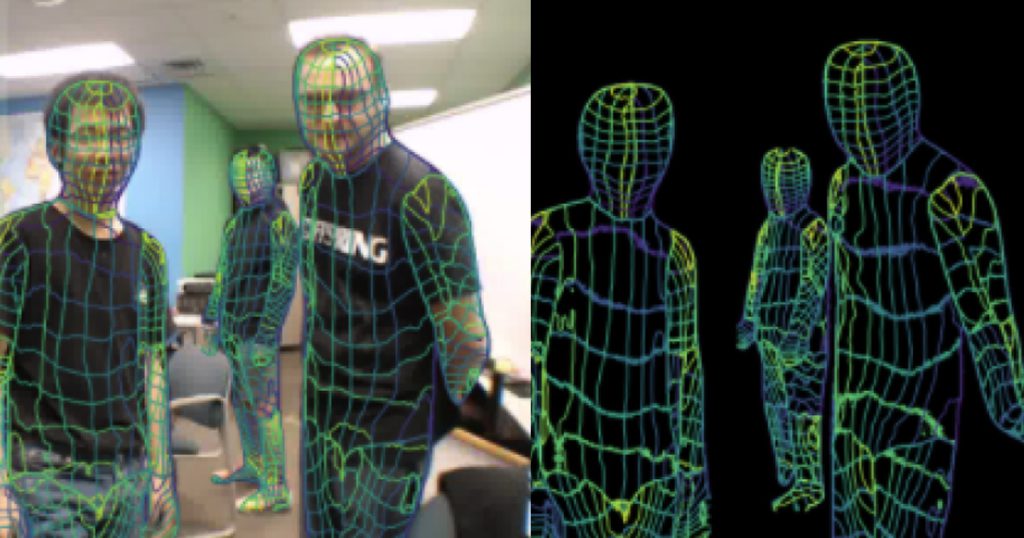Disclaimer: Opinions expressed below belong solely to the author.
As if we didn’t have enough concerns over privacy in this digital age, scientists at Carnegie Mellon University appear to have developed a technology for mapping humans in 3D using only WiFi signals.
They analyse their phase and amplitude, before feeding them to computer vision algorithms to produce an image, effectively “seeing” through walls and other obstacles.

The pre-print paper was published on arXiv three weeks ago and reported first by Vice this week.
As mentioned in the news reports, the efforts to detect or map humans without using expensive equipment such as Lidar have been going on for at least a decade. It seems they have finally produced fruit that may find practical use, though it’s hard to say whether it’s going to benefit us more than, possibly, harm.
Curiously, the authors themselves tout the technology as one that could be used to help, rather than hurt privacy:
In addition, they [WiFi signals] protect individuals’ privacy and the required equipment can be bought at a reasonable price. In fact, most households in developed countries already have WiFi at home, and this technology may be scaled to monitor the well-being of elder people or just identify suspicious behaviors at home.
– “DensePose From WiFi”, J. Geng, D. Huang, F. De La Torre
I’m not convinced that the ability to see through walls, even if it produces a very general 3D image, coupled with a “reasonable price” serve to enhance our privacy, though.
DensePose itself came out of Meta’s AI research labs, originally focused on generating 3D representations of humans using RGB pixels of a flat image. Carnegie Mellon team took it a step further and used radio signals produced by WiFi networks instead of visible light spectrum.

Given how many devices we already have at home, the notion that someone could either cheaply hack or outrightly buy a device that could potentially use them to determine not only whether someone is inside, but locate them in the space, sounds more like a dystopian nightmare.
Of course, like all tech, it could be used for productive purposes, such as monitoring sick, elderly, children or even pets within the boundaries of the home to check in on them from a distance and/or determine whether they may need help.
This is something of increasing importance as many pensioners live alone and there are increased cases of someone dying without anybody noticing in Singapore.
It may also be used to detect intruders — a feature particularly handy in a large house or other properties, enhancing work of visual systems like CCTV, which could otherwise be disabled by criminals.
Nevertheless, in this particular case, privacy concerns are bound to outweigh potential benefits, what may give rise to technological countermeasures interrupting or isolating WiFi signal from penetrating walls and making its way out to unwanted guests.
Fortunately, it’s an early stage proof-of-concept rather than a market-ready solution, so it’s going to take some time before anybody puts together such a WiFi-spy scanner to sell it on Amazon. Thus, for now, you should still focus on making sure nobody hacked your indoor cameras first.
Featured Image Credit: “DensePose From WiFi”, J. Geng, D. Huang, F. De La Torre










